
June 30thMinazuki is essential for the summer purification.It is a Japanese confectionery with adzuki beans on a triangular uiro.The triangular shape is ice that beats the heatimitate theAdzuki bean amuletIt means. And behind the birth of this sweet,Anecdote of "Himuro" in the Heian periodwas there.
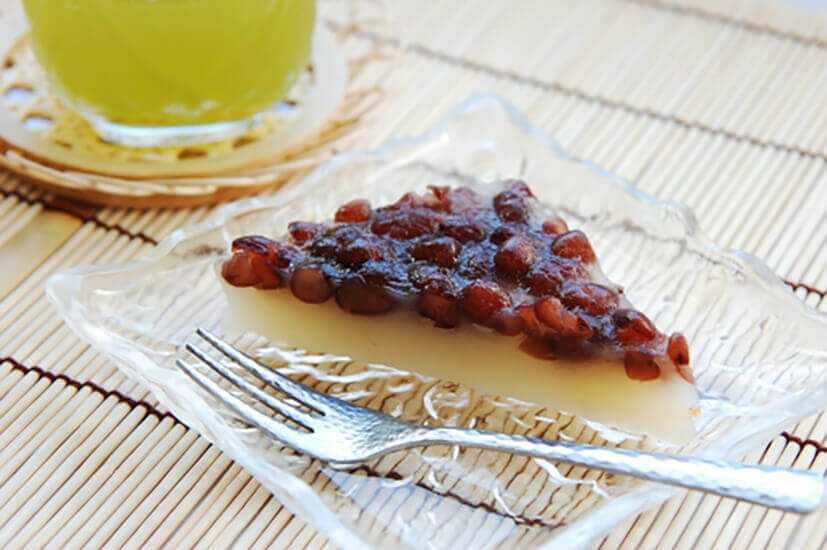
Japanese sweets, Minazuki
At that time, the function of the freezer was an underground cold storage warehouse called an ice room. Himuro isDig a hole with a circumference of about 10m and a depth of about 3m in the mountainous area where the temperature is much lower than the capital.Made. Inside, a thick layer of grass such as thatch was laid out and a thatched hut was built over it to protect it from wind and rain. In the summer, the aristocrats of the capital ordered the ice blocks stored in the ice room to be transported to the palace and processed in various ways to keep cool.
It is said that there were about six icehouses around Kyoto during the Heian period. The only Himuro ruins in Nishigamo Himuro-cho, Omiya, Kita-ku can still be seen today. This Himuro is located at an altitude of about 450m, and the temperature is about 6 degrees Celsius lower than in Kyoto city.
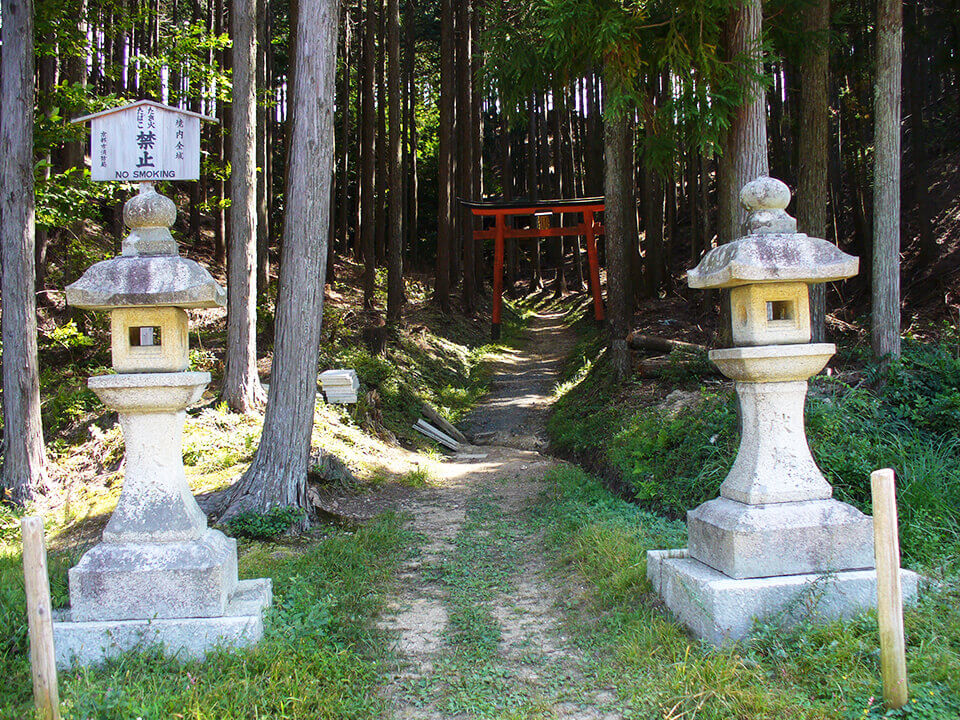
Himuro Shrine
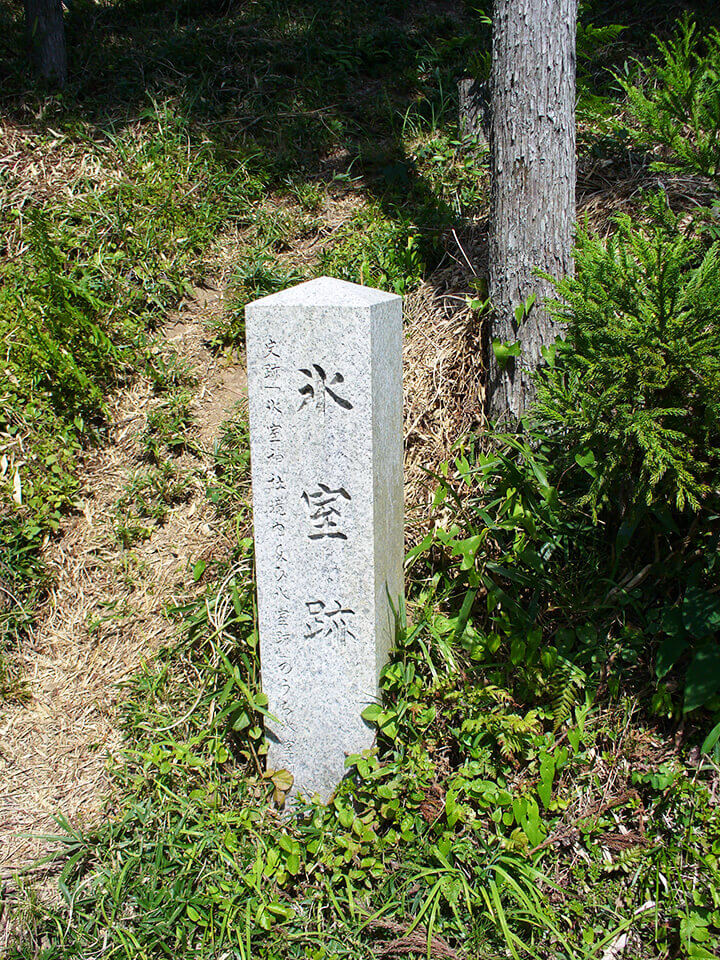
Monument of Himuro Ruins
Now, how was the ice presented to the Imperial Palace from the Himuro used?
In the literature of the Heian period "The Pillow Book" and "The Tale of Genji","Shaved ice (hi)” appears. Shaved ice was shaved ice that was shaved with a small knife, sprinkled with the nectar of Amadura, which was used instead of sugar, and eaten in a silver bowl. Amazura is a kind of syrup made by boiling down ivy juice, and can be said to be the forerunner of modern shaved ice. Also, in "The Tale of Genji," there are scenes of eating rice with ice water poured over it, and scenes of cooling off by applying ice to the skin. The summer in Kyoto in the Heian period must have been very hot.
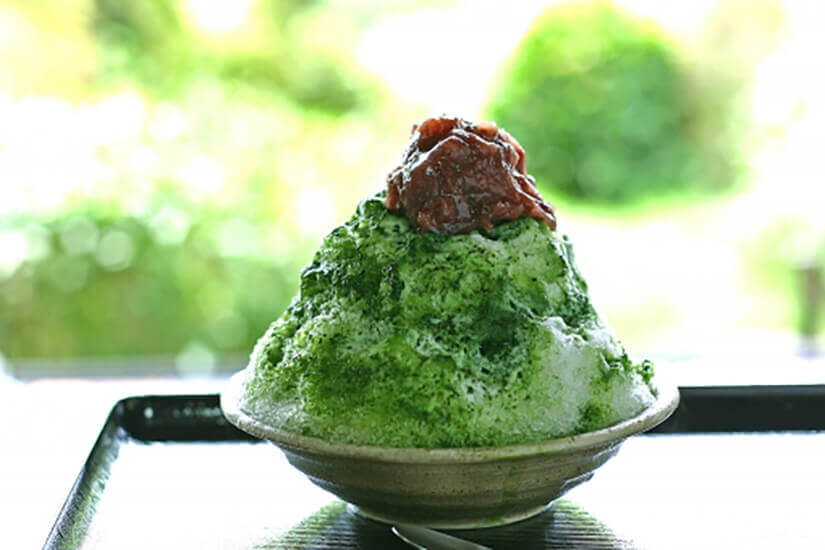
modern shaved ice
By the way, ice had other important uses as well. Every year on New Year's Day, the chief water officer who belonged to the Imperial Household Ministry and was engaged in water-related mattersHe had icehouses in various places report on the condition of the ice, and predicted the year's fortune.If the ice is thick, it means a good year, and if it is thin, it means a bad year. It was also used for cold storage of sake and food. And in the summer, when corpses tend to rot, ice was used instead of modern dry ice to prevent corpses from rotting. It is said that only nobles of the third rank and above were allowed to use ice.
During the summer, 500 to 800 kg of ice was transported from the Himuro to the Imperial Court a day, or about 80 tons a year. I hear that there were about 800 officials and workers in charge of the work. During the midsummer, transportation work continued every day from the Himuro to the Imperial Palace. The mass of ice weighed about 112 kilograms and was quickly transported in the coolest hours of the day before dawn by two workmen who took the horses with scarlet markings. It is said that he traveled about 10km from Himuro no Sato to the Imperial Palace in about three hours.
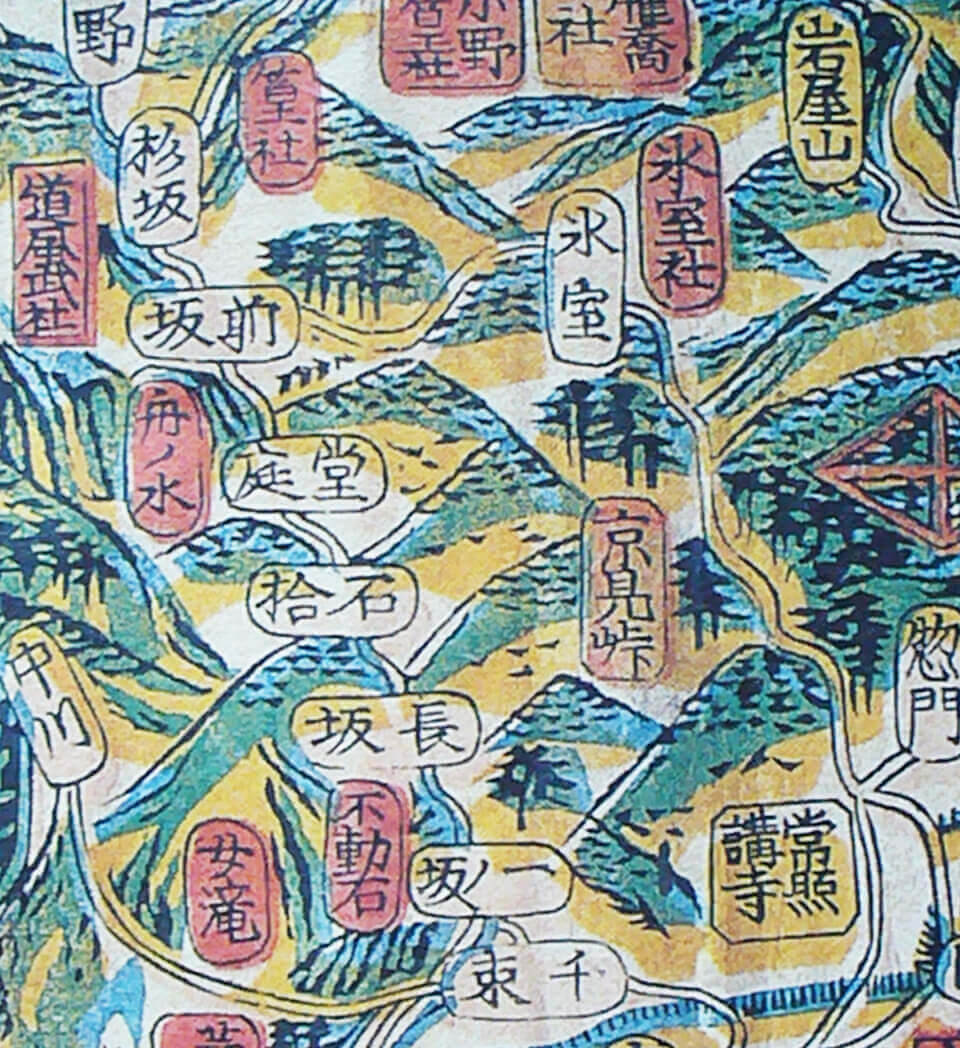
Himuro seen on an old map (upper middle)
In the intense heat, the work of carrying heavy blocks of ice, which they would never eat, from six icehouses, which were said to have been located in six locations, was a grueling task. Occasionally, some died. At Utano Fukuoji Shrine's main shrine, Utano Fukuoji Shrine, located in Utano Ward, there is enshrined as Okokojin, the servants and horses who failed to carry out their duties.While the nobles gracefully ate shaved ice, many servants and horses lost their lives.Noda.
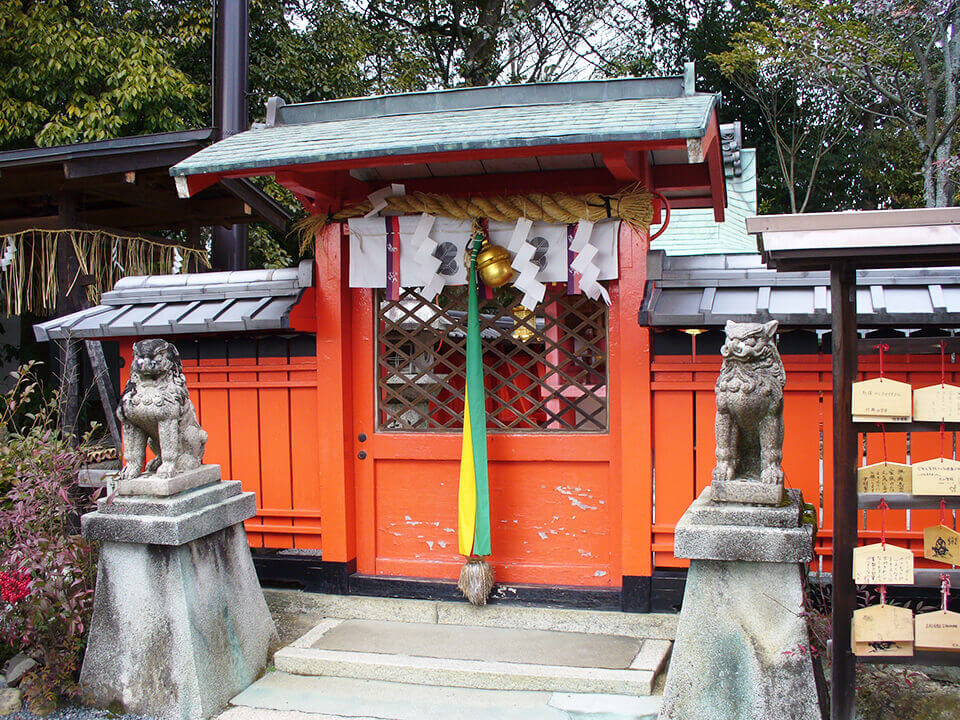
Subordinate shrine of Utano Fukuoji Shrine
Such ice was precious and expensive to the common people. Still they are strong.Instead of ice, they made dumplings out of wheat flour, cut them into triangles, and ate them like ice. Minazuki is a confection filled with the common people's wisdom and ingenuity to make you feel cool just by feeling cool.was.
Minazuki is only sold at Japanese confectionery shops and supermarkets in Kyoto during this period. While paying homage to the labor of the old Himuro servants and horses, I would like to eat Minazuki to get rid of the heat and evil, and get through the full-scale summer that is about to come.
Tradition that exists everywhere in the city of Kyoto. It is not just a picture, it is secretly alive in this modern age and continues to coexist with people. The two of Office TO, who previously wrote a series of articles "Kyoto's Demon World Exploration" in the monthly magazine Leaf, explore the mysterious "different" world of Kyoto, which was created over 1200 years. I will unravel the story while actually visiting the place. .
 News
News Feature article
Feature article Featured event
Featured event